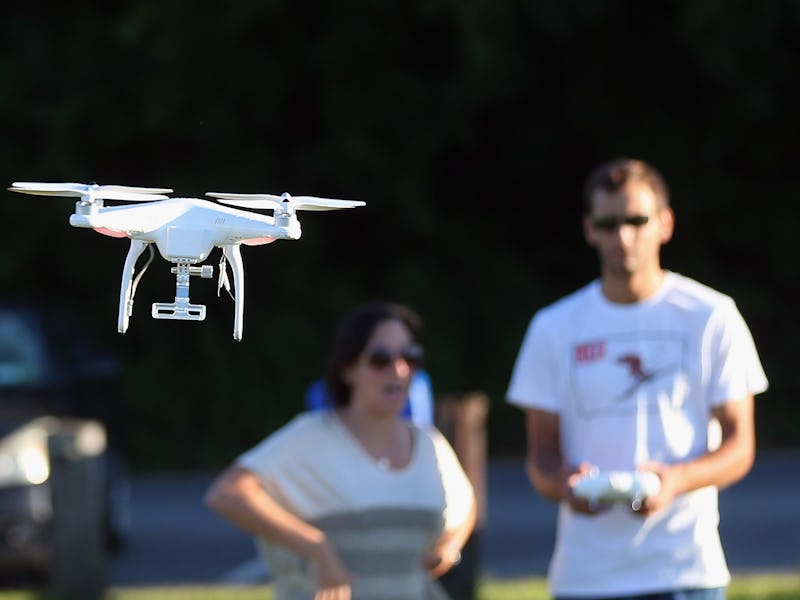U.S. Drone Guidelines Say Not to Spy on Neighbors -- Unless You Have a Good Reason To
Regulators dictate optional rules to follow.

The National Telecommunications & Information Administration is tackling the issue of drone privacy with a list of “Voluntary Best Practices” for drones in order to protect citizens and give companies a template to base their policies.
As commercial drones literally take off in the commercial space, government regulators are struggling to keep up and develop modern rules for drone flight. The FAA has released safety guidelines, Congress is debating two bills that would create laws around drone flight, and now there’s another list of things for drone operators to consider.
These new guidelines are all voluntary, meaning there are no legal ramifications for not following them. Of course, they’re also all common-sense initiatives that operators probably should abide by, if only to be a better, more considerate pilot.
“Best Practices are … not intended to serve as a template for future statutory or regulatory obligations,” the report reads, “in part because doing so would make these standards mandatory (not voluntary) and could therefore raise First Amendment concerns.”
A drone is flown for recreational purposes as an airplane passes nearby in the sky above Old Bethpage, New York on September 5, 2015.
1. Fill your neighbors in on why you’re flying your drone (if you want to)
Where it’s practical, the administration recommends pilots inform their neighbors when they are gathering information. Neighbors should be informed about the purpose for data collection, what data is gathered, and how or if it is retained. And close bystanders should also be given examples for how the video or photos being collected might be shared.
So, when you want to grab that sweet sunset shot with your drone, it might not be a bad idea to have some thorough project information packets on-hand to pass out to the neighbors.
If you want to be nice, that is.
2. Law-abiding citizens have a right to privacy
“Reasonable Expectation of Privacy” is a legalese way of pointing to The Golden Rule. Don’t film someone doing something you wouldn’t want to be filmed doing without consent.
That means no creeping around windows, no stalking from far away for extended periods of time, and no crossing into private property.
Suppose you find yourself in a Shia LaBeouf Disturbia scenario and you’re forced into a situation in which you have to creep on your murderous neighbor, what to do then? The guidelines have you covered as they stipulate a pilot should only honor others’ reasonable expectations of privacy “in the absence of a compelling need to do otherwise.” Murderous neighbors seems a compelling enough reason to break the rules.
Of course, one doesn’t need to find an exception to a guideline to ignore said guideline – seeing as it’s just a guideline.
A boy wearing first person view (FPV) goggles flies a quadcopter drone he built himself on October 24, 2014 near Rathen, Germany. Inexpensive drones used for aerial photography are rapidly gaining in popularity.
3. Blur faces of anyone you’ve photographed (if you feel like it)
The administration is worried about damaging video ruining an unknowing person’s reputation and hurting their chances for a job or healthcare coverage.
Hence, these guidelines dictate that you blur out the faces of all bystanders in your drone footage – which does sound like the right thing to do – but again, the key word here is “guideline.”
4. Try your best not to get hacked
If the footage or data is being collected for personal use, there’s probably little need to worry. But if it’s for a business or professional contract, the administration recommends establishing a security policy for the data.
The guidelines recommend regularly monitoring data breaches, training employees, and allowing the data to only be accessed by authorized personnel. Of course, you won’t be fined or arrested if you don’t. So …
5. Keep up to date on changing guidelines (though you can totally not, as well)
These are by no means the end-all and be-all for codified drone privacy suggestions. So, the administration recommends keeping a vigilant eye out for any new not-rules that might be coming in the future.